|
|
|
"...his class, therefore, is the perfect balance between
Training Process:
General(A) The personal qualities most encouraged are:
Martial artists are traditionally renowned for being courageous, responsible and capable and the qualities that underlie these virtues are:
We also use famous stories associated with the martial arts to illustrate these values.
Children very much enjoy the consistent class structure and take great pride and pleasure in their mastery and familiarity of it.
(B)The development of martial ability:
We follow a very structured programme refined over 15 years of teaching thousands of children. Techniques and exercises are broken down into their most basic elements and these are explored through exercises and games designed specifically around children's developmental urges and levels of physical, intellectual and emotional maturity.
Students are graded according to their progress through these developmental platforms. Read more:
(A) Personal Qualities (class phases)
i. Stillness
The Japanese word "wa" refers to inner harmony and for children this begins with the ability to be still and act calmly and sensibly. Every class starts with a short period formal stillness. For young children this is challenging until they make an intellectual and emotional breakthrough and realise that stillness is choice available to them and quite easily made.
This self control is a core quality that contributes to the development of confidence, commitment, discipline, calmness and self- esteem. We recognise a students ability to make this choice by awarding first a white, orange and finally blue badge.
ii. Listening (Leadership)
Leadership refers to the ability to both lead and to follow instructions. During this phase, students take turns leading the class through a series of drills that develop the ability to fall safely, and techniques already mastered. Students are guided to the qualities that make an instruction easy for the others to understand and follow.
This phase of the class contributes to the development of balance, robustness, coordination, confidence, empathy, discipline, self esteem, concentration, cognition, listening skills, team work and good behaviour.
We award a series of badges to recognise growth in ability to lead and follow instructions.
iii. Social Harmony
In the 3rd phase, students pair up and practise various aspect of a technique. Teaching stresses that it takes the cooperation of both partners to execute a fluid and graceful technique. Initially the uki (partner who falls for the technique) resist falling, associating this with "being beaten", but with training they make the paradigm shift of seeing falling of equal value and an equally enjoyable experience.
This phase of the class contributes to the development of coordination, concentration, cognition, communication skills, respect, social skills and friendship.
iv. Fighting Spirit
We then progress to the most exciting phase of the class. Children naturally love exercises that involve grappling and rolling on the ground and we have developed exercises that encourage them to express their full energy and strength through safe, constructive and very enjoyable games.
This phase of the class contributes to the development of balance, strength, stamina, flexibility, toughness, coordination, confidence, commitment, enthusiasm, empathy, self esteem, friendship.
v. Samurai
When the class has had a satisfactory workout we circle up and discuss various aspects of training and tell traditional stories about famous martial artists from various traditions and their creativity and courage. Through this process, children learn to interact and contribute appropriately to the group discussion.
This phase of the class contributes to mental development, specifically academic performance, concentration, cognition, listening skills and the the development of calmness, discipline, communication skills and respect.
StillnessWe end the class as we began, in formal and quiet sitting so children leave training in a quiet and contained frame of mind.
Summary
(B) Skill Development (developmental platforms & urges)
Foundation Level (Reception Year)
Level 1 (Year 1 - KS1)
Level 2 (Year 2 - KS1)
This requires a greater degree of coordination between partners and an integration of all the skills developed to this point.
Level 3 (Year 3- KS2)
During Year 3 children usually transcend the previous developmental platform and the excitement of growth becomes tangible.
Level 4 (Year 4- KS2)
ConclusionThe growth of both skill and character is recognised by the presentation of the badges. These badges are worn on students uniforms as an outward manifestation of their internal growth.
|
|||||||||||||||||||||||||||||||||||||||||||
|
email:
info@martialarteducation.org |
||||
|
|||||





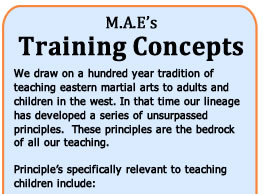
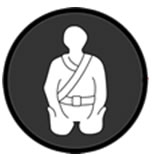
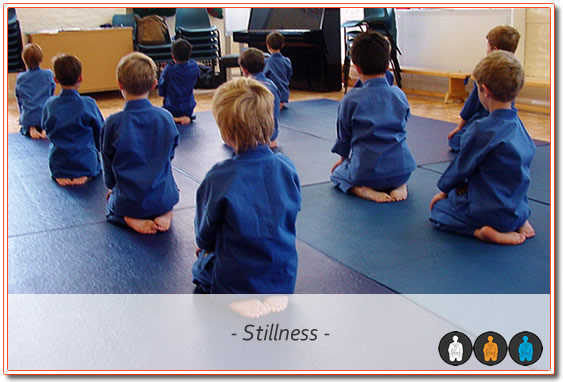

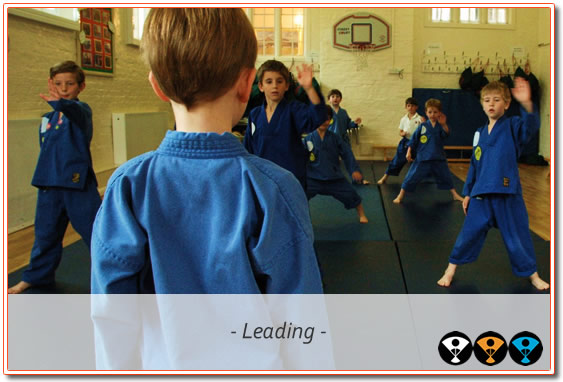
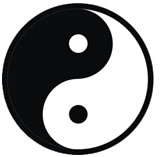
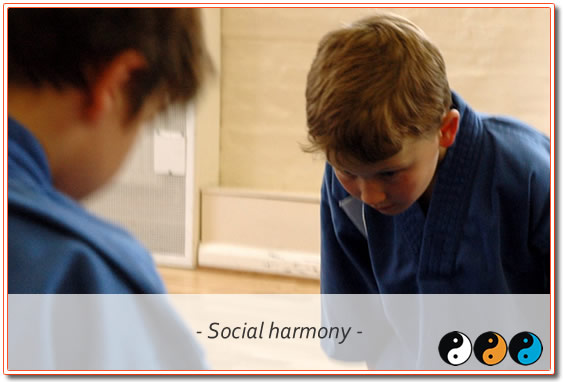
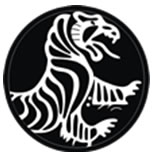
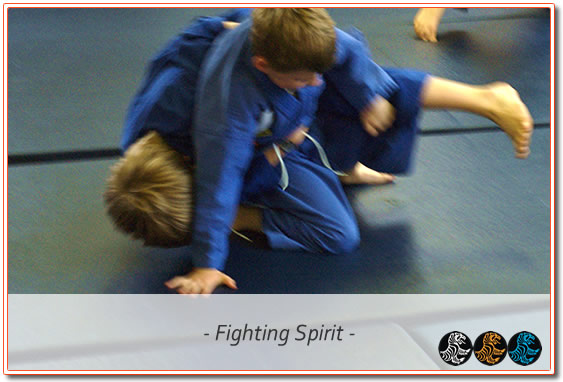
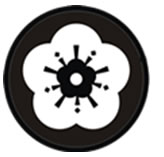



 Training initially consists of:
Training initially consists of:  When the group is able to drill together students explore the stepping, orientation and handwork as separate components of the technique. The language and understandings achieved during this stage are important for accelerated learning of more advanced techniques later on.
When the group is able to drill together students explore the stepping, orientation and handwork as separate components of the technique. The language and understandings achieved during this stage are important for accelerated learning of more advanced techniques later on. During the 3rd Stage, these separate elements are linked and practised as one sequence with a cooperating partner in a formal, slow and safe way.
During the 3rd Stage, these separate elements are linked and practised as one sequence with a cooperating partner in a formal, slow and safe way.  Finally the technique is practised with a resisting partner/s in a variety of fluid and non-formal ways. At this point the various aspects of the technique have been condensed and internalised and can be spontaneously executed.
Finally the technique is practised with a resisting partner/s in a variety of fluid and non-formal ways. At this point the various aspects of the technique have been condensed and internalised and can be spontaneously executed.  As a group's discipline develops, so a greater complexity of technique and depth of understanding is introduced. In this way children earn to be patient in acquiring knowledge. Slowly they come to understand how the sequence works and are then able to explore and enjoy the creative ways it can be executed.
As a group's discipline develops, so a greater complexity of technique and depth of understanding is introduced. In this way children earn to be patient in acquiring knowledge. Slowly they come to understand how the sequence works and are then able to explore and enjoy the creative ways it can be executed.
